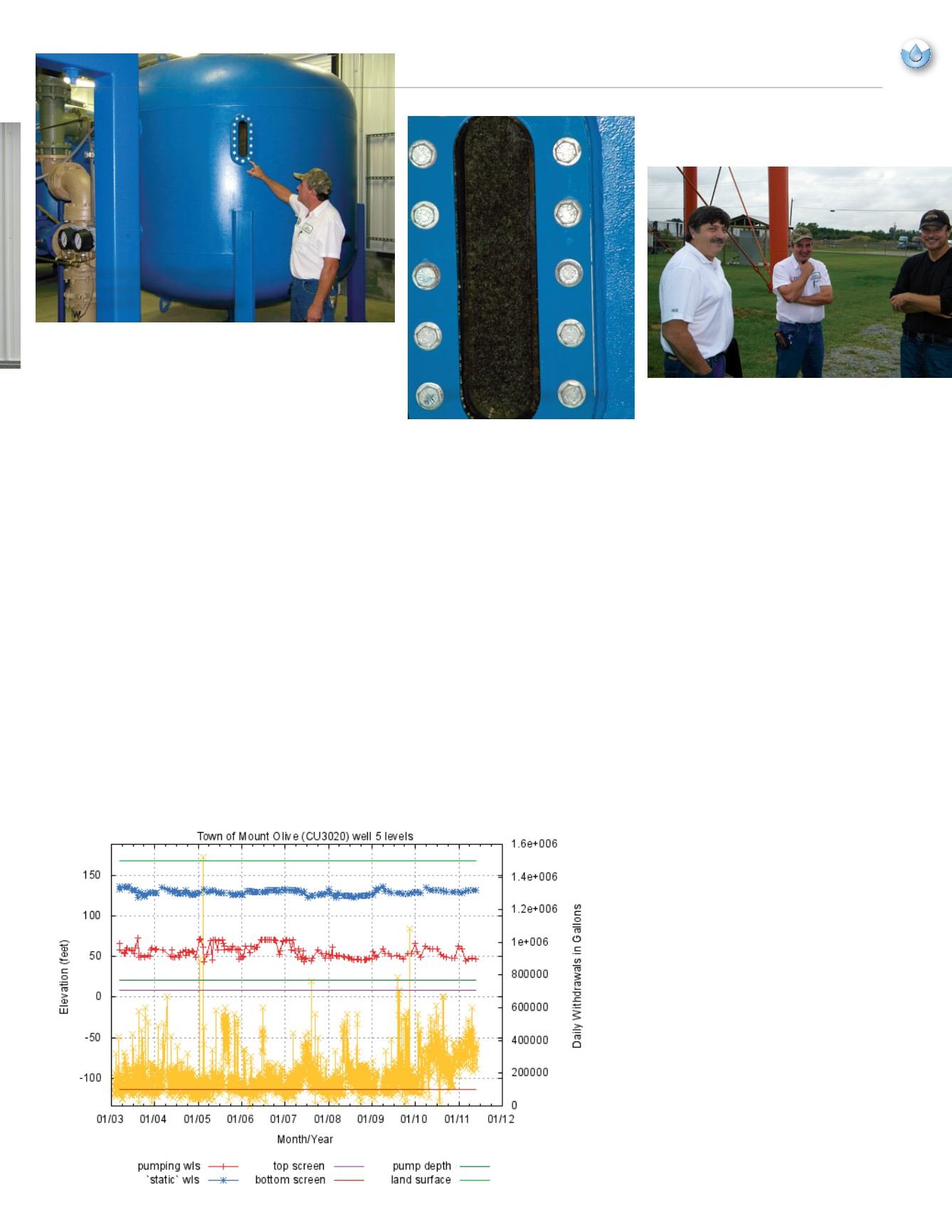
Figure 1 shows a hydrograph for Mount
Olive’s #5 well. Static water levels shown
in blue are steady across the graph, over
a period of more than ten years. This
indicates a healthy aquifer with adequate
recharge. The pumping water levels over
the same time period are also steady, and
this shows that the well’s pump and gravel
pack are functioning as designed. Keeping
track of static and pumping water levels is
important to gage how the aquifer, well and
pump are performing.
FIGURE 1.
HYDROGRAPH OF MOUNT OLIVE WELL 5
The Town obtained a combination grant
and loan from the State Drinking Water
Revolving Fund to expand the water
treatment facility located on Boiling Chair
Road in order to improve the quality of
the drinking water. The entire project was
initially approved for $2.2 million with
80% of the total being grant money, and
20% matching funds. Mt Olive Pickles
quickly agreed to partner with the Town
to assist with the matching funds, because
of its vested interest as a groundwater
stakeholder. The Town ended up owing
about $434,000 toward the project.
One thing that helped the Town obtain a
grant through the revolving fund was their
state-approved Wellhead Protection Plan.
When applying for a grant or loan through
the State Revolving Fund, preference points
are given for having an approved wellhead
protection plan. Wellhead protection is a
way that water systems can protect their
source aquifer from surface spills or leaks
that can enter groundwater and be drawn
into the cone of depression of a pumping
well. Mount Olive used public education
to increase awareness of best management
practices to reduce the chances of leaks or
spills within its wellhead protection area.
NC Rural Water Association can assist
your groundwater system in developing a
wellhead protection plan at little or no cost
A common treatment for iron in
concentrations up to 10 or 15 mg/L is a
manganese greensand filter. Mount Olive’s
old water treatment plant used four large
glauconite greensand and anthracite media
filters to remove iron down to levels of
0.2 to 0.3 mg/L. The ferrous iron in the
raw water was chemically oxidized by
chlorine injection, causing precipitation,
followed by filtration through the media in
the pressure vessels to remove the iron and
manganese. The old filtration system used
52,000 gallons for each backwash, which
Red and White during backwash
Site glass in tank so filter medium
can be seen during run time, a
requirement by Public Water Supply
Winter 2014 |
NCRWA.COM
29
feature


